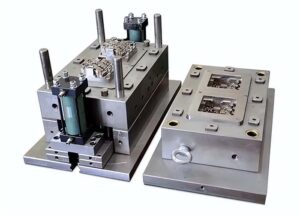Why is hot runner molding so popular?
Injection molding is the plastics manufacturing process of choice for major plastics-consuming industries, such as automotive and medical.
In the United States, there are nearly 16,000 plastic molding and plastics manufacturing facilities in all 50 states.
In China, the export of injection molds ranks among the top in the world. Zhejiang, Jiangsu, and Guangdong plastic mold output accounts for 70% of the country’s total injection mold output.
However, as with any mass-produced product, injection molded parts are usually profitable only when they are produced in volume. As a result, plastics manufacturers often look for ways to scale up production and increase efficiency.
One way to address these needs is through hot runner molding. In a cold runner system, the runner is usually part of the mold and is not heated, while hot runner molding uses a heated runner system to introduce the melt directly into the mold.
Here are 5 ways that hot runner molding increases efficiency
Hot runner molding feature 1. Faster cycle times
Since the runner is not part of the mold, the cooling time is calculated based on the part itself, not the part plus the runner. Faster cooling time means faster cycle times. Of course, faster cycle times mean more parts produced per time period.
Hot runner molding feature 2. Lower pressure
One disadvantage of a cold runner system is that the melt will cool between injection cycles inside the nozzle. This means that a higher pressure is required to press the cooled melt from the nozzle into the mold.
On the other hand, a hot runner system has a heat source either internally or externally that will maintain the temperature of the melt after the hot runner valve is closed. This means that less energy is used to push the melt into the mold and less maintenance is required to replace parts that wear out under the high pressures required by the cold runner system.
Hot runner molding feature 3. Reduce plastic underfill
With a cold runner system, there is a risk that the melt will cool too much as it flows through the cold runner and clogs the runner, ultimately resulting in underfilled plastic parts being produced. Even if these parts are reground and recycled, the effort, time, and labor to form defective parts are wasted.
In contrast, hot runner systems have a much lower risk of underfilling parts. Each nozzle of a hot runner system is heated so that the melt can be delivered to each fill point without clogging. Higher quality parts are produced.
In addition, hot runner systems can produce larger parts, such as automotive parts, because the melt can be distributed over a larger mold area through multiple hot runner molding machine nozzles.
Hot runner molding feature 4. Less surface preparation
This is probably the main consideration in distinguishing hot runner systems from cold runner systems. Cold runner systems are not molded with runners and gates attached, so they must be removed.
Runner removal can cause significant quality control issues due to the stresses introduced during runner removal. Parts may become discolored or weakened when the runner is removed.
Similarly, after breaking the runner from the part, residual material may remain attached to the part, which will require additional grinding steps.
Hot runner molding feature 5. Reduce waste
Runners leftover after forming represent waste. These runners can be reground and recycled. However, the energy used to melt the plastic and inject it into the mold, as well as the time and effort to remove and regrind the runners, cannot be recovered.
Besides the 5 Ways How Hot Runner Molding Increases Efficiency article, you may also be interested in the below articles.
Summary Of 50 Injection Mold Structure Operation Dynamic Diagrams
Auto Parts Stamping Die Design Concept




